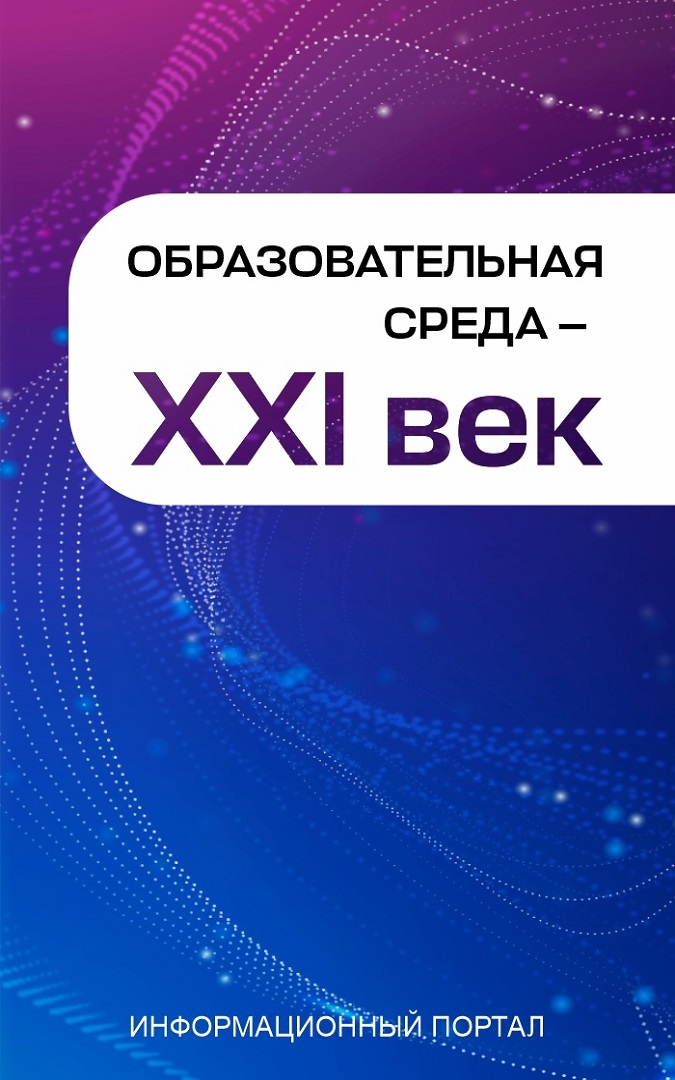U. Dmitrieva, M. Kuznecova
BACHELORS’ CREATIVE INITIATIVE’S DEVELOPMENT AS FUTURE TEACHERS’ PROFESSIONAL EDUCATION’S COMPONENT (ON THE EXAMPLE OF CHILDREN’S MAGAZINE DESIGNING)
DOI: http://doi.org/10.15350/2409-7616.2020.3.21
Uliana M. Dmitrieva –Candidate of Philological Sciences, Associate Professor of the Department of preschool education’s theories and methods, «Novosibirsk state pedagogical University», Novosibirsk, Russian Federation, E-mail: ulyana2019@yandex.ru
Mariia V. Kuznecova –English teacher of a municipal budget educational institution of Novosibirsk «Secondary school № 155», Novosibirsk, Russian Federation, E-mail: golubeva19952001@yandex.ru
Abstract. Changing conditions of society’s life, orientation to a subject position in the education system, the need for responsible and creative teachers, and other factors make it necessary to form and develop a future teachers’ active and creative position. The main postulate of the presented research: creative initiative is considered as an element of the basis for the teachers’ general professional and professional competencies formation. The article presents the theoretical and practical study results of the possibilities of pedagogical University students’ creative initiative development in a specially organized children’s magazine designing. The developmental learning and the cognitive interest’s development theories were chosen as the methodological base. The theoretical provisions of creative initiative development are briefly described. All stages of the study are described in detail. The preparatory stage is emphasized, which gave students historical and theoretical knowledge of children’s journalism. Important pedagogical conditions for the magazine’s design organization were the productive activity’s encouragement, independence, self-expression, emphasis on self-awareness as a subject of activity, the absence of criticism, and the process management’s softness. The subjects’ activity product evaluation was arranged on the seven criteria basis developed by the authors. The criteria system was correlated with the creative initiative’s components and General professional and professional competencies’ elements, while priority was given to the activity component and subjects’ specific skills. A detailed qualitative analysis of the design product with quotes from students’ reflexive essays is presented. The most of subjects demonstrated a high level of creative initiative development. In conclusion authors emphasized the effectiveness of using magazine design as a mean of future teachers’ creative initiative development.
Keywords: professional education, teacher’s General professional competence, teacher’s professional competence, creative initiative, children’s journalism, children’s magazines, designing.
References:
- Alibaeva L.N. The projects method in English lessons as a condition for the student’s personality development. Bulletin of modern science, 2017, no. 2-2 (26), pp. 17 – 19. (In Russian). URL: https://elibrary.ru/item.asp?id=29207300
- Anufriev Е.А., Tsarev D.V. The Creative Initiative as a Factor of Formation of Professional (MusicalPerforming) Competencies of Students in High School. Scientific notes of the Russian state social University, 2015, v. 14, no. 6 (133), pp. 141 – 149. (In Russian). URL: https://www.elibrary.ru/item.asp?id=25656159
- Belorussova S.A. Elementary school pupils universal educational actions formation during the work with printed and handwritten children’s magazines. Herzen notes. Primary education, 2018, v. 9, no. 1. pp. 185 – 190. (In Russian). URL: https://www.elibrary.ru/item.asp?id=32501693
- Bodyan L.A., Kalugina N.L., Varlamova I.A., Girevaya K.Y., Bodyan A.N. The context-modular approach to formation of creative initiative of students. Modern knowledge-intensive technologies, 2015, no. № 9, pp. 99 – 102. (In Russian). URL: https://www.elibrary.ru/item.asp?id=24332454
- Vasilkovskaya M.I. The creative initiatives development of youth associations’ participants. Bulletin of Kemerovo state University of culture and arts, 2014, no. 27, pp. 176 – 182. (In Russian). URL: https://www.elibrary.ru/item.asp?id=21495011
- Devetyarova R.Z., Ovsyannikova O.A., Pantya O.M. Children’s journalism in kindergarten. Education in the Kirov region, 2017, no. 2 (42), pp. 31 – 33. (In Russian). URL: https://www.elibrary.ru/item.asp?id=29817318
- Desyaev S.N., Desyaeva N.D. The didactic orientation of gaming devices and technologies in the children’s journalism. Modern problems of science and education, 2015, № 2-2. (In Russian). URL: https://www.elibrary.ru/item.asp?id=24921198
- Dmitrieva U.M, Chesnokova G.S. Innovative activity of students as the condition of their professional formation. Duma Bulletin: theory and practice of additional education, 2017, no. 1 (9), pp. 102 – 105. (In Russian). URL: https://www.elibrary.ru/item.asp?id=29908871
- Ermakova T.V., Usmanova F.G., Chirkovskaya O.N. Preschoolers communication skills development. Methodist, 2015, no. 8, pp. 64 – 67. (In Russian). URL: https://www.elibrary.ru/item.asp?id=26622545
- Kapustina G.L. Children’s periodicals: historical, typological and functional aspects and substantive aspects. Bulletin of the Tambov University. Series: Humanities, 2014, no. 1 (129), pp. 99 – 105. (In Russian). URL: https://elibrary.ru/item.asp?id=22914429
- Kohanaya O.E. Children’s journalism as a creative process. Bulletin of the Moscow state University of culture and arts, 2013, no. 2 (52). pp. 126 – 130. (In Russian). URL: https://www.elibrary.ru/item.asp?id=18898214
- Liarskiy A.B. “We created our own world by ourselves…”: early 20th century school handwritten press as a factor of socialization. Russia recent history, 2014, no. 2 (10), pp. 179 – 196. URL: https://elibrary.ru/item.asp?id=21844187
- Makarenko E.Yu. Children’s illustrated magazines in the conditions of post-soviet transformation. Bulletin of the V. N. Tatishchev Volga state University, 2018, v. 1, no. 1, pp. 128 – 137. (In Russian). URL: https://www.elibrary.ru/item.asp?id=32615016
- Makarenko E.Yu. Prerevolutionary children’s magazines: typology and design. Almanac of modern science and education, 2016, no. 3 (105), pp. 67 – 73. (In Russian). URL: https://www.elibrary.ru/item.asp?id=25599660
- Polichka A.E., Luchaninov D.V. Bachelors’ creative initiative based on the information and educational environment’s interactivity. Educational technologies and society, 2015, no. 3, pp. 436 – 451. (In Russian). URL: https://www.elibrary.ru/item.asp?id=24102771
- Remezova K.V. “…The children idea, put into practice by “adults”: a collection of drawings and stories “our magazine” (1916). Children’s notes, 2014, v. 6, no. 2, pp. 38 – 50. (In Russian). URL: https://www.elibrary.ru/item.asp?id=25220173
- Stepashov N.S., Dremova N.B., Koniweva E.V. Initiative in innovative education: methodological aspect. Collection of Humanities research, 2018, no. 2, pp. 78 – 85. (In Russian). URL: https://www.elibrary.ru/item.asp?id=34969049
For citation:
Dmitrieva U.M., Kuznecova M.V. Bachelors’ creative initiative’s development as future teachers’ professional education’s component (on the example of children’s magazine designing). CITISE, 2020, no. 3, pp.243-252. DOI: http://doi.org/10.15350/2409-7616.2020.3.21


